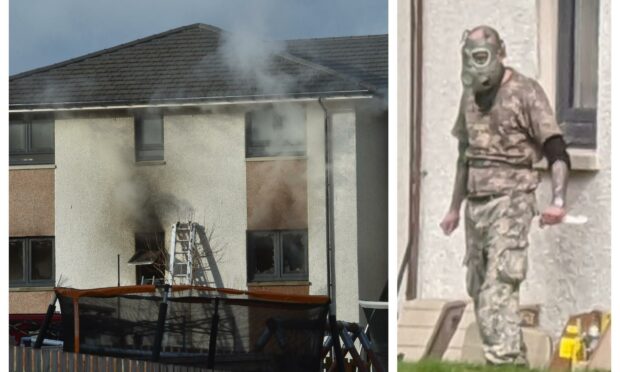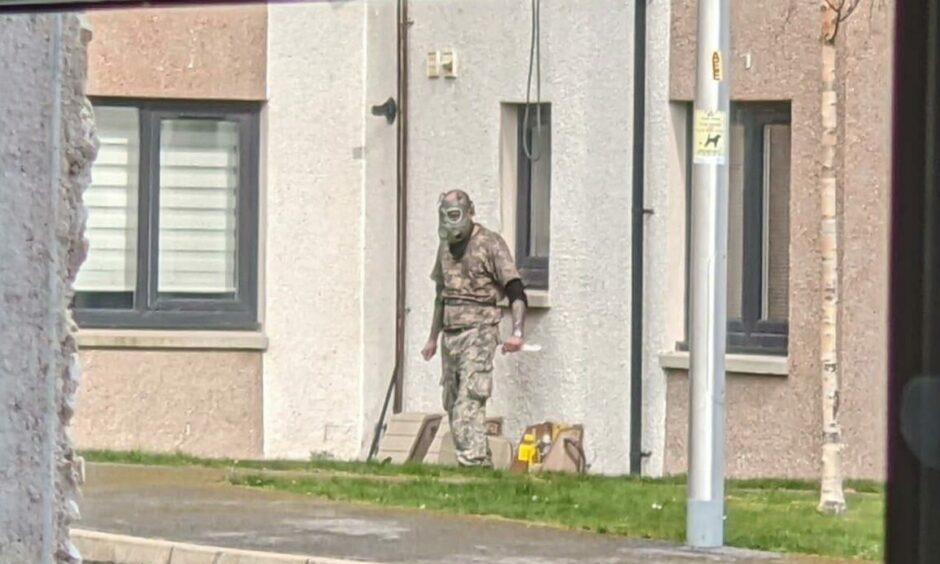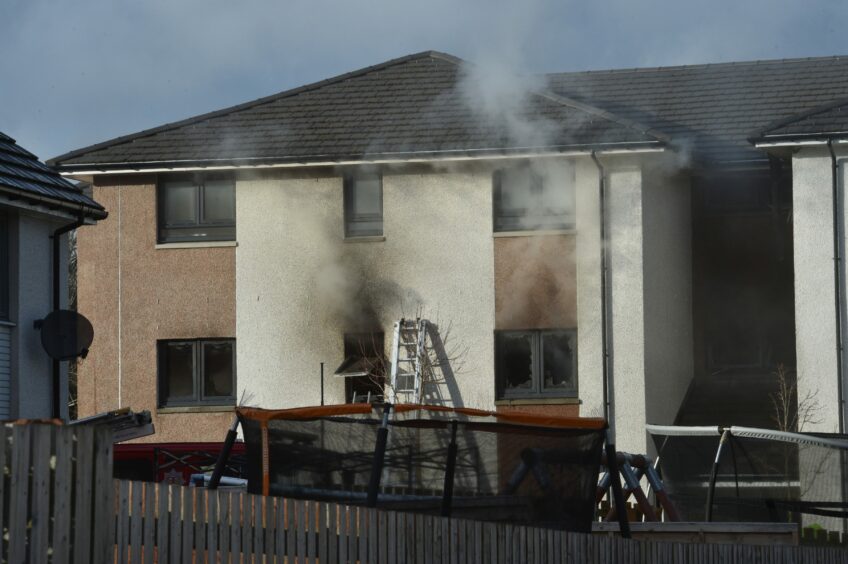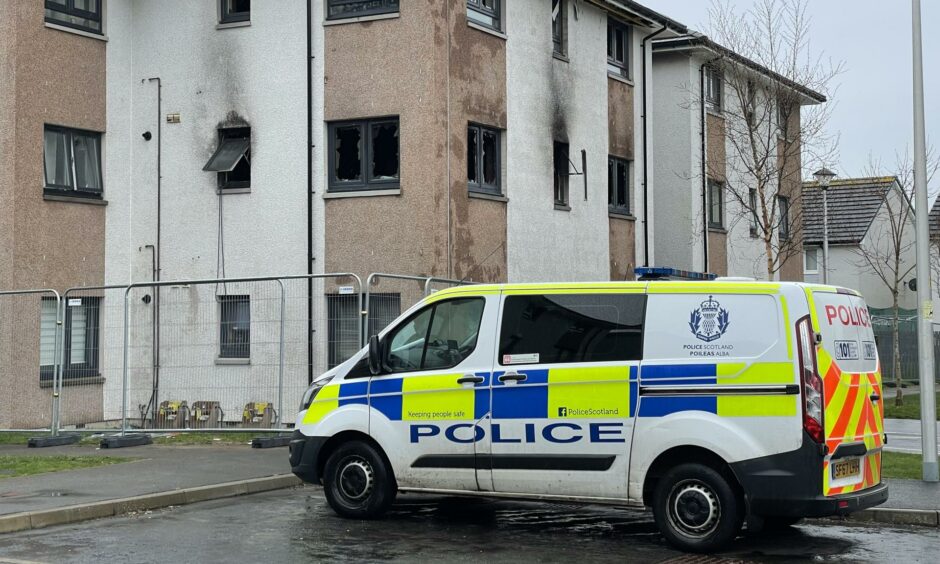Police were alerted to concerns about a man who possessed weapons and made threats of violence the day before he was shot by a firearms officer, an investigation by the watchdog has revealed.
But a duty inspector in the control room covering the Inverness area dismissed a report about Krzystof Andrusczak’s deteriorating mental health as not being a matter for the police.
The senior officer decided that, despite there already being an arrest warrant for the then-40-year-old, officers had no powers to deal with him.
Instead, a mental health officer responded the following day, on March 31 2022.
It was during that visit that the knifeman launched a petrol bomb attack – setting a block of flats on fire and attempting to murder five police officers.
The Police Investigation and Review Commissioner (PIRC) said in a report that the duty inspector’s initial decision-making “failed to take account of the threat, risk and harm posed or mitigate the potential dangers and wide public safety issues”.
Inverness police criticised in watchdog’s report
Criticisms of Police Scotland’s handling of the armed standoff – which ended with Andrusczak being shot by a firearms officer – was highlighted in the PIRC’s annual report and accounts for 2022/23.
It featured the force’s response to the incident as a case study of one of the regulator’s investigations during that period.
The head of PIRC, Michelle Macleod, presented her report to a meeting of the Scottish Police Authority on Thursday.
It said that a mental health officer obtained a warrant to enter Andrusczak’s home and detain him for a mental health assessment.
Unarmed police officers accompanied mental health staff and they discovered Andrusczak dressed in camouflaged clothing, wearing a gas mask and crouching over petrol bombs after forcing entry into his home.
A blaze broke out when Andrusczak threw one of the petrol bombs inside the property – causing the authorities to evacuate the building – and another petrol bomb was thrown at officers from a window.
Andrusczak exited the first-floor flat from a window and rappeled to the ground using a rope.
Watchdog report reveals armed police ‘averted tragic unintentional consequences’ despite unarmed officers standing in the way
The account of events that unfolded at Andrusczak ‘s home in Polvanie View also revealed that Andrusczak, who charged at police as he swung a three-foot-long bike chain and brandished two large knives, was allowed to get within about one metre of an armed police officer and struck an officer’s face with the chain.
Two police Taser cartridges struck Andrusczak’s neck and torso and he was hit by a rubber bullet, but both methods had little effect on his threatening advances.
When it appeared that he was about to stab the assaulted officer, an armed police officer fired a single shot at the man’s upper left leg – seriously injuring Andrusczak.
It has also emerged that, during the shooting, unarmed police officers were “in close proximity around the scene and directly in the line of trajectory” behind Andrusczak as the shot was fired.
The PIRC report added: “In aiming downwards, the Authorised Firearms Officer who shot the man averted any potentially tragic unintentional consequences.”
Although the PIRC investigation found that Police Scotland’s use of force was “proportionate and necessary” to disarm Andrusczak, the report also made recommendations concerning the positioning of unarmed officers and the “general lack of cordon control” as the incident unfolded.
Andrusczak was, at first, charged with the attempted murder of five police officers, wilful fire-raising and assault.
However, he was later acquitted of all charges at the High Court in Glasgow when prosecutors accepted that he had been suffering from a mental disorder.
A compulsion court order without a limit of time was imposed on him to remain in the State Hospital in Carstairs for psychiatric treatment.
His antics left a £1.8million repair bill due to the damage that he caused at the block of flats.
During a clean-up, workmen went on to discover a cache of deadly weapons in the landing – including a crossbow, bayonet, slingshot and hatchet.
Police Scotland’s spokesman told The Press and Journal: “We were aware of the findings of the PIRC and have fully implemented all of the recommendations made.”
PIRC had 911 incidents for potential investigation referred to it by Police Scotland, the Crown Office and Procurator Fiscal Service and other policing bodies operating in Scotland during the 2022/23 period.
That was an increase of 51% from the previous year’s 602 referrals – resulting in a 10% increase in the number of investigations from 124 in 2021/22 to 136 in the latest period.
READ MORE: Two major incidents simultaneously requiring armed police in Inverness and Rothes was ‘challenging’
For all the latest court cases in Inverness as well as crime and breaking incidents, join our new Facebook group.



